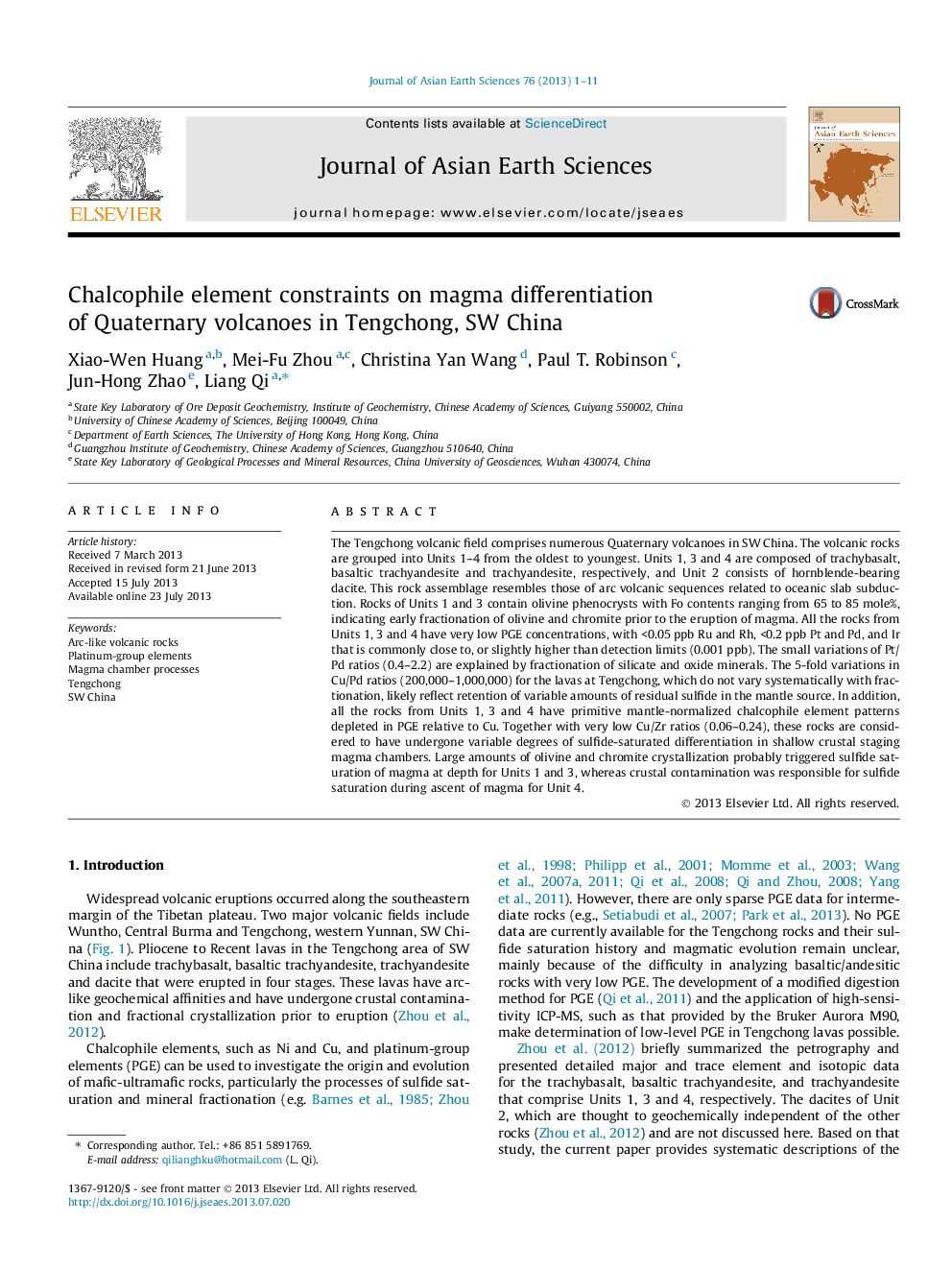| Article ID | Journal | Published Year | Pages | File Type |
|---|---|---|---|---|
| 4731009 | Journal of Asian Earth Sciences | 2013 | 11 Pages |
•Rocks of Units 1 and 3 experienced early fractionation of olivine and chromite.•Magmas were produced with variable amounts of sulfide left in the mantle source.•All the rocks have undergone variable degrees of sulfide-saturated differentiation.•Olivine and chromite crystallization triggered sulfide saturation of Units 1 and 3.•Crustal contamination was responsible for sulfide saturation of Unit 4.
The Tengchong volcanic field comprises numerous Quaternary volcanoes in SW China. The volcanic rocks are grouped into Units 1–4 from the oldest to youngest. Units 1, 3 and 4 are composed of trachybasalt, basaltic trachyandesite and trachyandesite, respectively, and Unit 2 consists of hornblende-bearing dacite. This rock assemblage resembles those of arc volcanic sequences related to oceanic slab subduction. Rocks of Units 1 and 3 contain olivine phenocrysts with Fo contents ranging from 65 to 85 mole%, indicating early fractionation of olivine and chromite prior to the eruption of magma. All the rocks from Units 1, 3 and 4 have very low PGE concentrations, with <0.05 ppb Ru and Rh, <0.2 ppb Pt and Pd, and Ir that is commonly close to, or slightly higher than detection limits (0.001 ppb). The small variations of Pt/Pd ratios (0.4–2.2) are explained by fractionation of silicate and oxide minerals. The 5-fold variations in Cu/Pd ratios (200,000–1,000,000) for the lavas at Tengchong, which do not vary systematically with fractionation, likely reflect retention of variable amounts of residual sulfide in the mantle source. In addition, all the rocks from Units 1, 3 and 4 have primitive mantle-normalized chalcophile element patterns depleted in PGE relative to Cu. Together with very low Cu/Zr ratios (0.06–0.24), these rocks are considered to have undergone variable degrees of sulfide-saturated differentiation in shallow crustal staging magma chambers. Large amounts of olivine and chromite crystallization probably triggered sulfide saturation of magma at depth for Units 1 and 3, whereas crustal contamination was responsible for sulfide saturation during ascent of magma for Unit 4.
